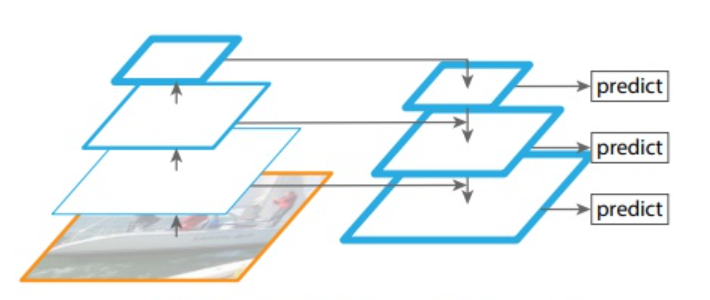- Java锁的逻辑(结合对象头和ObjectMonitor)
- 还在用饼状图?来瞧瞧这些炫酷的百分比可视化新图形(附代码实现)⛵
- 自动注册实体类到EntityFrameworkCore上下文,并适配ABP及ABPVNext
- 基于Sklearn机器学习代码实战
续 基于开源模型的实时人脸识别系统 进行人脸识别首要的任务就是要定位出画面中的人脸,这个任务就是人脸检测。人脸检测总体上算是目标检测的一个特殊情况,但也有自身的特点,比如角度多变,表情多变,可能存在各类遮挡。早期传统的方法有Haar Cascade、HOG等,基本做法就是特征描述子+滑窗+分类器,随着2012年Alexnet的出现,慢慢深度学习在这一领域开始崛起。算法和硬件性能的发展,也让基于深度学习的人脸识别不仅性能取得了很大的提升,速度也能达到实时,使得人脸技术真正进入了实用。 人脸检测大体上跟随目标检测技术的发展,不过也有些自己的方法,主要可以分为一下几类方法. 。
由于这个系列重点并不在于算法细节本身,因而对于一些算法只是提及,有兴趣可以自己精读.
这类方法通过级联几个网络来逐步提高准确率,比较有代表性的是MTCNN方法。 MTCNN通过级联PNet, RNet, ONet,层层过滤来提高整个检测的精度。这个方法更适合CPU,那个时期的嵌入式设备使用比较多。 由于有3个网络,训练起来比较麻烦.
这一块主要来源于目标检测中的RCNN, Fast RCNN, Faster RCNN 。
这类方法精度高,但速度相对较慢.
SSD是目标检测领域比较有代表性的一个算法,与RCNN系列相比,它是one stage方法,速度比较快。基于它的用于人脸检测的代表性方法是SSH. 。

YOLO系列在目标检测领域比较成功,自然的也会用在人脸检测领域,比如tiny yolo face,yolov5face, yolov8face等,基本上每一代都会应用于人脸.
为了能够达到实时,同时也要有较好的效果,我们将目光锁定在yolo系列上,yolo在精度和速度的平衡上做的比较好,也比较易用。目前最新的是yolov8, 经过搜索,也已经有人将其用在人脸检测上了: derronqi/yolov8-face: yolov8 face detection with landmark (github.com) , 。
简单起见,我们选择onnxruntime,该框架既支持CPU也支持GPU, 基本满足了我们的开发要求.
为了减少重复工作,我们可以定义一个模型的基类, 对模型载入、推理的操作进行封装,这样就不需要每个模型都实现一遍了:
from easydict import EasyDict as edict
import onnxruntime
import threading
class BaseModel:
def __init__(self, model_path, device='cpu', **kwargs) -> None:
self.model = self.load_model(model_path, device)
self.input_layer = self.model.get_inputs()[0].name
self.output_layers = [output.name for output in self.model.get_outputs()]
self.lock = threading.Lock()
def load_model(self, model_path:str, device:str='cpu'):
available_providers = onnxruntime.get_available_providers()
if device == "gpu" and "CUDAExecutionProvider" not in available_providers:
print("CUDAExecutionProvider is not available, use CPUExecutionProvider instead")
device = "cpu"
if device == 'cpu':
self.model = onnxruntime.InferenceSession(model_path, providers=['CPUExecutionProvider'])
else:
self.model = onnxruntime.InferenceSession(model_path,providers=['CUDAExecutionProvider'])
return self.model
def inference(self, input):
with self.lock:
outputs = self.model.run(self.output_layers, {self.input_layer: input})
return outputs
def preprocess(self, **kwargs):
pass
def postprocess(self, **kwargs):
pass
def run(self, **kwargs):
pass
继承BaseModel, 实现模型的前处理和后处理:
class Yolov8Face(BaseModel):
def __init__(self, model_path, device='cpu',**kwargs) -> None:
super().__init__(model_path, device, **kwargs)
self.conf_threshold = kwargs.get('conf_threshold', 0.5)
self.iou_threshold = kwargs.get('iou_threshold', 0.4)
self.input_size = kwargs.get('input_size', 640)
self.input_width, self.input_height = self.input_size, self.input_size
self.reg_max=16
self.project = np.arange(self.reg_max)
self.strides=[8, 16, 32]
self.feats_hw = [(math.ceil(self.input_height / self.strides[i]), math.ceil(self.input_width / self.strides[i])) for i in range(len(self.strides))]
self.anchors = self.make_anchors(self.feats_hw)
def make_anchors(self, feats_hw, grid_cell_offset=0.5):
"""Generate anchors from features."""
anchor_points = {}
for i, stride in enumerate(self.strides):
h,w = feats_hw[i]
x = np.arange(0, w) + grid_cell_offset # shift x
y = np.arange(0, h) + grid_cell_offset # shift y
sx, sy = np.meshgrid(x, y)
# sy, sx = np.meshgrid(y, x)
anchor_points[stride] = np.stack((sx, sy), axis=-1).reshape(-1, 2)
return anchor_points
def preprocess(self, image, **kwargs):
return resize_image(image, keep_ratio=True, dst_width=self.input_width, dst_height=self.input_height)
def distance2bbox(self, points, distance, max_shape=None):
x1 = points[:, 0] - distance[:, 0]
y1 = points[:, 1] - distance[:, 1]
x2 = points[:, 0] + distance[:, 2]
y2 = points[:, 1] + distance[:, 3]
if max_shape is not None:
x1 = np.clip(x1, 0, max_shape[1])
y1 = np.clip(y1, 0, max_shape[0])
x2 = np.clip(x2, 0, max_shape[1])
y2 = np.clip(y2, 0, max_shape[0])
return np.stack([x1, y1, x2, y2], axis=-1)
def postprocess(self, preds, scale_h, scale_w, top, left, **kwargs):
bboxes, scores, landmarks = [], [], []
for i, pred in enumerate(preds):
stride = int(self.input_height/pred.shape[2])
pred = pred.transpose((0, 2, 3, 1))
box = pred[..., :self.reg_max * 4]
cls = 1 / (1 + np.exp(-pred[..., self.reg_max * 4:-15])).reshape((-1,1))
kpts = pred[..., -15:].reshape((-1,15)) ### x1,y1,score1, ..., x5,y5,score5
# tmp = box.reshape(self.feats_hw[i][0], self.feats_hw[i][1], 4, self.reg_max)
tmp = box.reshape(-1, 4, self.reg_max)
bbox_pred = softmax(tmp, axis=-1)
bbox_pred = np.dot(bbox_pred, self.project).reshape((-1,4))
bbox = self.distance2bbox(self.anchors[stride], bbox_pred, max_shape=(self.input_height, self.input_width)) * stride
kpts[:, 0::3] = (kpts[:, 0::3] * 2.0 + (self.anchors[stride][:, 0].reshape((-1,1)) - 0.5)) * stride
kpts[:, 1::3] = (kpts[:, 1::3] * 2.0 + (self.anchors[stride][:, 1].reshape((-1,1)) - 0.5)) * stride
kpts[:, 2::3] = 1 / (1+np.exp(-kpts[:, 2::3]))
bbox -= np.array([[left, top, left, top]]) ###合理使用广播法则
bbox *= np.array([[scale_w, scale_h, scale_w, scale_h]])
kpts -= np.tile(np.array([left, top, 0]), 5).reshape((1,15))
kpts *= np.tile(np.array([scale_w, scale_h, 1]), 5).reshape((1,15))
bboxes.append(bbox)
scores.append(cls)
landmarks.append(kpts)
bboxes = np.concatenate(bboxes, axis=0)
scores = np.concatenate(scores, axis=0)
landmarks = np.concatenate(landmarks, axis=0)
bboxes_wh = bboxes.copy()
bboxes_wh[:, 2:4] = bboxes[:, 2:4] - bboxes[:, 0:2] ####xywh
classIds = np.argmax(scores, axis=1)
confidences = np.max(scores, axis=1) ####max_class_confidence
mask = confidences>self.conf_threshold
bboxes_wh = bboxes_wh[mask] ###合理使用广播法则
confidences = confidences[mask]
classIds = classIds[mask]
landmarks = landmarks[mask]
if len(bboxes_wh) == 0:
return np.empty((0, 5)), np.empty((0, 5))
indices = cv2.dnn.NMSBoxes(bboxes_wh.tolist(), confidences.tolist(), self.conf_threshold,
self.iou_threshold).flatten()
if len(indices) > 0:
mlvl_bboxes = bboxes_wh[indices]
confidences = confidences[indices]
classIds = classIds[indices]
## convert box to x1,y1,x2,y2
mlvl_bboxes[:, 2:4] = mlvl_bboxes[:, 2:4] + mlvl_bboxes[:, 0:2]
# concat box, confidence, classId
mlvl_bboxes = np.concatenate((mlvl_bboxes, confidences.reshape(-1, 1), classIds.reshape(-1, 1)), axis=1)
landmarks = landmarks[indices]
return mlvl_bboxes, landmarks.reshape(-1, 5, 3)[..., :2]
else:
return np.empty((0, 5)), np.empty((0, 5))
def run(self, image, **kwargs):
img, newh, neww, top, left = self.preprocess(image)
scale_h, scale_w = image.shape[0]/newh, image.shape[1]/neww
# convert to RGB
img = cv2.cvtColor(img, cv2.COLOR_BGR2RGB)
img = img.astype(np.float32)
img = img / 255.0
img = np.transpose(img, (2, 0, 1))
img = np.expand_dims(img, axis=0)
output = self.inference(img)
bboxes, landmarks = self.postprocess(output, scale_h, scale_w, top, left)
# limit box in image
bboxes[:, 0] = np.clip(bboxes[:, 0], 0, image.shape[1])
bboxes[:, 1] = np.clip(bboxes[:, 1], 0, image.shape[0])
return bboxes, landmarks
在Intel(R) Core(TM) i5-10210U上,yolov8-lite-t耗时50ms, 基本可以达到实时的需求.
参考文献: ZOU, Zhengxia, et al. Object detection in 20 years: A survey. Proceedings of the IEEE , 2023. MINAEE, Shervin, et al. Going deeper into face detection: A survey. arXiv preprint arXiv:2103.14983 , 2021. 。
https://mbd.pub/o/bread/ZJyTmZty 。
最后此篇关于基于开源模型搭建实时人脸识别系统(二):人脸检测概览与模型选型的文章就讲到这里了,如果你想了解更多关于基于开源模型搭建实时人脸识别系统(二):人脸检测概览与模型选型的内容请搜索CFSDN的文章或继续浏览相关文章,希望大家以后支持我的博客! 。
我有这个代码: System.err.print("number of terms = "); System.out.println(allTerms.size()); System.err
我有以下问题:在操作系统是 Linux 的情况下和在操作系统是 MacOs 的情况下,我必须执行不同的操作。 所以我创建了以下 Ant 脚本目标: /u
我正在调用 system("bash ../tools/bashScript\"This is an argument!\"&"),然后我正在调用 close(socketFD) 直接在 system
使用最初生成的随机元素来约束随机数组的连续元素是否有效。 例如:我想生成一组 10 个 addr、size 对来模拟典型的内存分配例程并具有如下类: class abc; rand bit[5:0
我正在创建一个必须使用system(const char*)函数来完成一些“繁重工作”的应用程序,并且我需要能够为用户提供粗略的进度百分比。例如,如果操作系统正在为您移动文件,它会为您提供一个进度条,
我即将编写一些项目经理、开发人员和业务分析师会使用的标准/指南和模板。目标是更好地理解正在开发或已经开发的解决方案。 其中一部分是提供有关记录解决方案的标准/指南。例如。记录解决/满足业务案例/用户需
在开发使用压缩磁盘索引或磁盘文件的应用程序时,其中部分索引或文件被重复访问(为了论证,让我们说一些类似于 Zipfian 分布的东西),我想知道什么时候足够/更好地依赖操作系统级缓存(例如,Debia
我们编写了一个 powershell 脚本,用于处理来自内部系统的图像并将其发送到另一个系统。现在,业务的另一部分希望加入其中,对数据进行自己的处理,并将其推送到另一个系统。打听了一下,公司周围有几个
我正在尝试朗姆酒我的应用程序,但我收到以下错误:System.Web.HttpUnhandledException:引发了“System.Web.HttpUnhandledException”类型的异
关闭。这个问题不符合Stack Overflow guidelines .它目前不接受答案。 要求我们推荐或查找工具、库或最喜欢的场外资源的问题对于 Stack Overflow 来说是偏离主题的,
所以我在其他程序中没有收到此错误,但我在这个程序中收到了它。 这个程序是一个我没有收到错误的示例。 #include int main() { system("pause"); } // en
我在 c# System.URI.FormatExption 中遇到问题 为了清楚起见,我使用的是 Segseuil 的 Matlab 方法,并且它返回一个图片路径 result。我想为其他用户保存此
我正在尝试像这样设置文本框的背景色: txtCompanyName.BackColor = Drawing.Color.WhiteSmoke; 它不喜欢它,因为它要我在前面添加系统,例如: txtCo
请帮助我解决 System.StackOverflowException我想用 .aspx 将记录写入数据库我使用 4 层架构来实现这一切都正常但是当我编译页面然后它显示要插入数据的字段时,当我将数据
我使用了一些通常由系统调用的API。 因此,我将 android:sharedUserId="android.uid.system" 添加到 manifest.xml, 并使用来自 GIT 的 And
我正在尝试创建一个小型应用程序,它需要对/system 文件夹进行读/写访问(它正在尝试删除一个文件,并创建一个新文件来代替它)。我可以使用 adb 毫无问题地重新挂载该文件夹,如果我这样做,我的应用
我想从没有 su 的系统 priv-app 将/system 重新挂载为 RW。如何以编程方式执行此操作?只会用 Runtime.getruntime().exec() 执行一个 shell 命令吗
我正在尝试制作一个带有登录系统的程序我对此很陌生,但我已经连续工作 8 个小时试图解决这个问题。这是我得到的错误代码 + ServerVersion 'con.ServerVersion' threw
当我“构建并运行”Code::Blocks 中的程序时,它运行得非常好!但是当我从“/bin”文件夹手动运行它时,当它试图用 system() 调用“temp.bat”时,它会重置。这是为什么?它没有
我想使用 system/pipe 命令来执行具有特殊字符的命令。下面是示例代码。通过系统/管道执行命令后,它通过改变特殊字符来改变命令。我很惊讶地看到系统命令正在更改作为命令传递的文本。 run(ch

我是一名优秀的程序员,十分优秀!